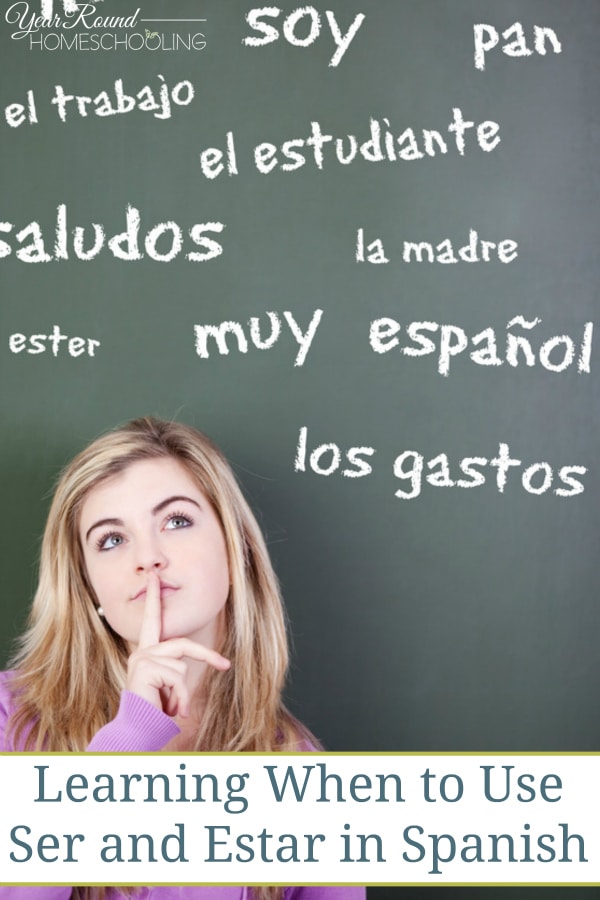If you’re new to Spanish, you might be wondering what the issue is when learning ser and estar. Here’s the problem: They both mean “to be”, so I could say soy (the yo conjugation of ser) or estoy (the yo conjugation of estar) and both mean “I am”. BUT, you can only use each word in specific situations. Yikes!
I’ll be honest. This was one of my biggest hurdles in learning basic Spanish in college. But once I started to learn basic phrases that used ser and estar, I found it easier to remember when to use each one. Here’s a quick rundown on when to use each word.

When to Use Ser
Basically, you use ser in the following contexts:
- Origin
- Possession
- Occupation
- Description
- Time
Let’s discuss a few examples of these uses.
- Origin: Use ser to talk about where a person or thing is from. For example, I am from Florida. If I was telling someone that, I would say “Soy de Florida.” (I am from Florida.)
- Possession: Use ser to explain that something belongs to a person. To say that the book is John’s, you would say “El libro es de Juan.” (The book is Juan’s.)
- Occupation: Use ser to talk about what you do for work or a hobby. To say you’re a teacher, which homeschooling parents are, say, “Soy un profesor.” (I am a male teacher.) or “Soy una profesora.” (I am a female teacher.)
- Description: To talk about how a person or thing physically looks, use ser. For example, to say “The boy is tall”, you would say “El niño es alto.”
- Time: Ser is also used to talk about time. To express that it is 3:00, you would say “Son las tres.” (It is three o’clock.)
When to Use Estar
Estar, on the other hand, is used primarily for the following meanings:
- Location
- Condition
- Emotion
- Continuous action
A few more examples:
- Location: Estar is used to describe where an object or a person is located. If you wanted to say “The house is near the store”, you would use the ella conjugation of estar and say, “La casa está cerca de la tienda.“
- Condition: If you are going to talk about the condition of an item, you would also use estar. For example, “The door is open” would be “La puerta está abierta.“
- Emotion: Use estar to talk about how you or another person is feeling. To say, “They are sick”, you would use the ellos/ellas form of estar and say “Ellos están enfermos.”
- Continuous action: You also use estar when you’re using a present progressive verb form, that is, one that expresses continuous action. So, for example, if you wanted to say “I am studying”, you would use the yo form of estar to say “Estoy estudiando.”
For even more help with ser and estar in Spanish, check out our ser and estar flashcards over at Look! We’re Learning!
